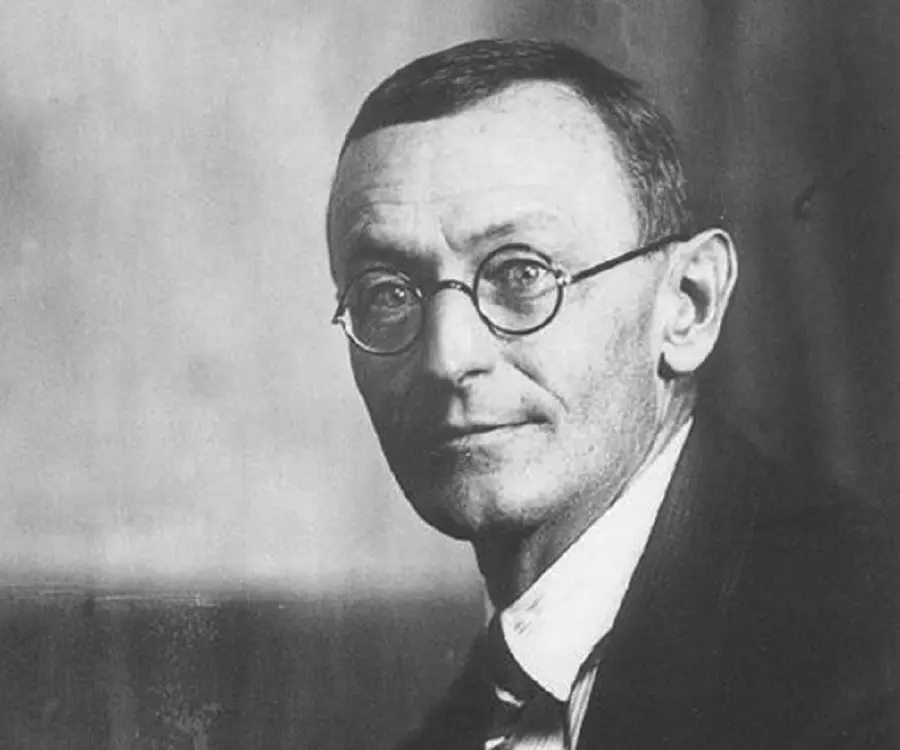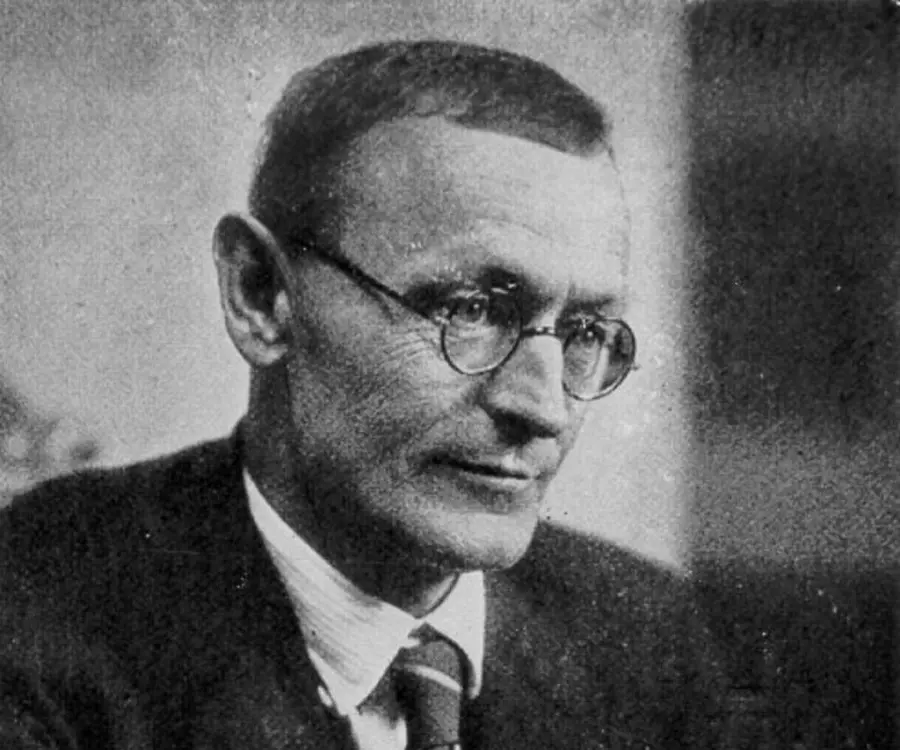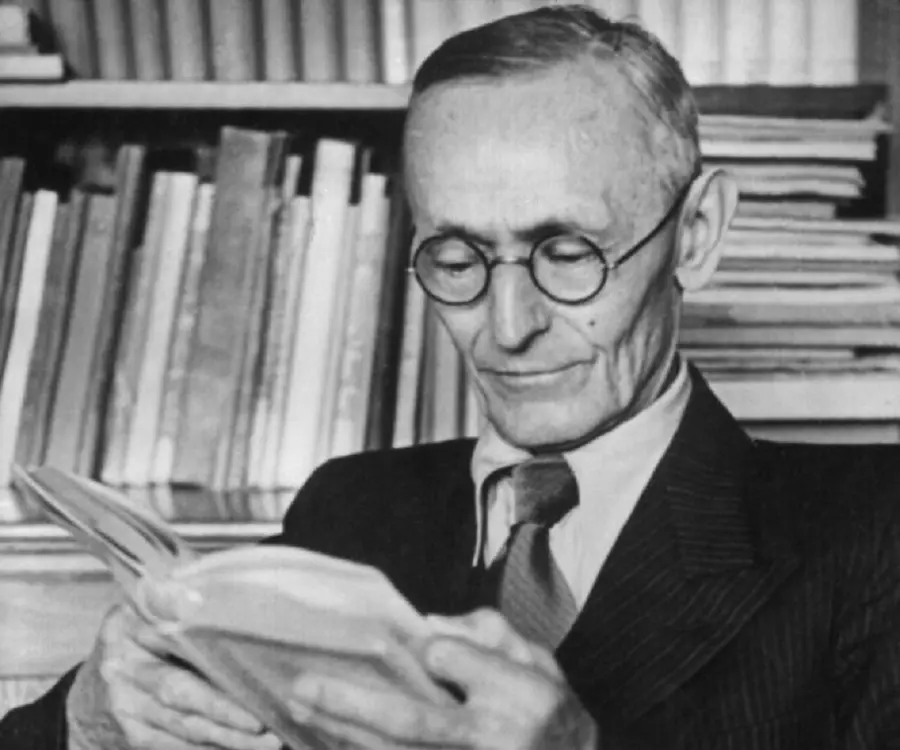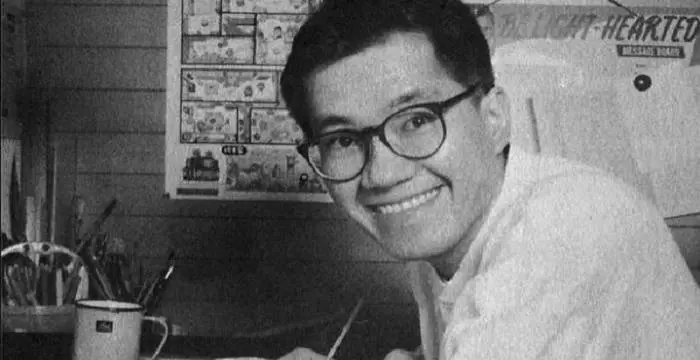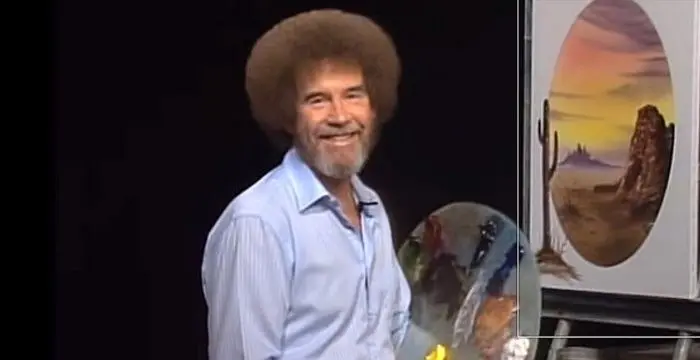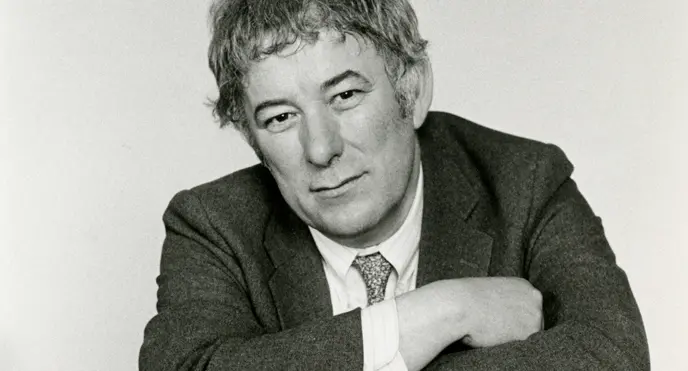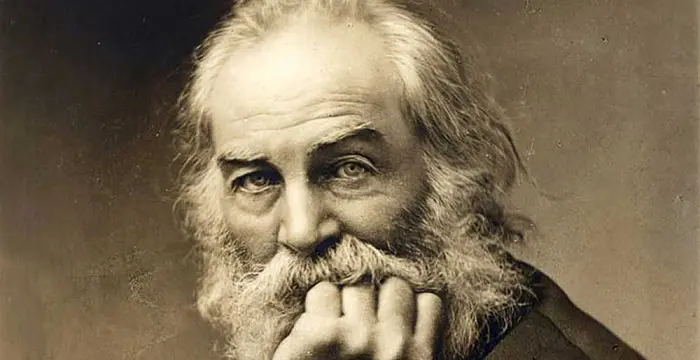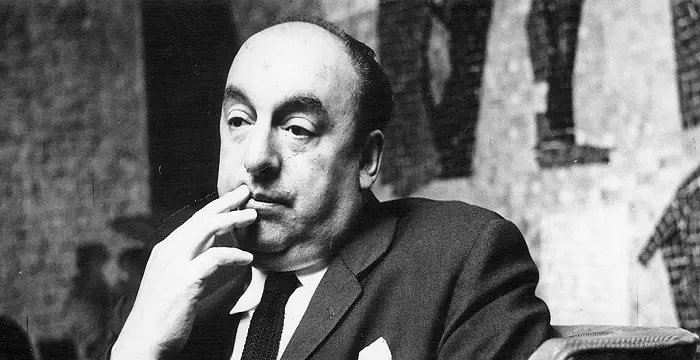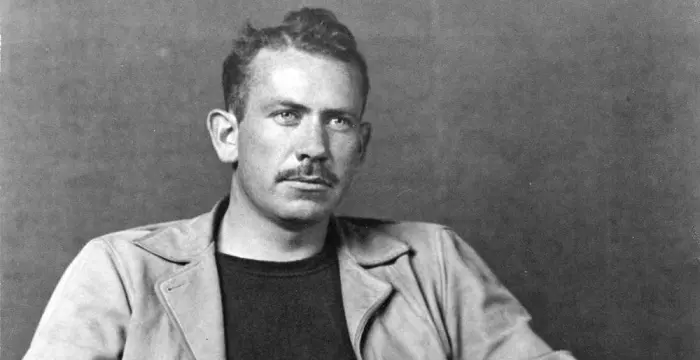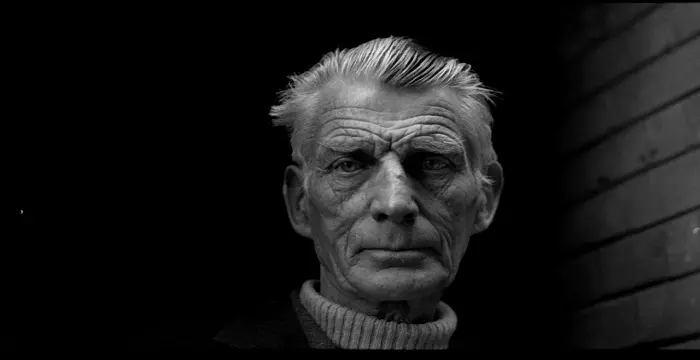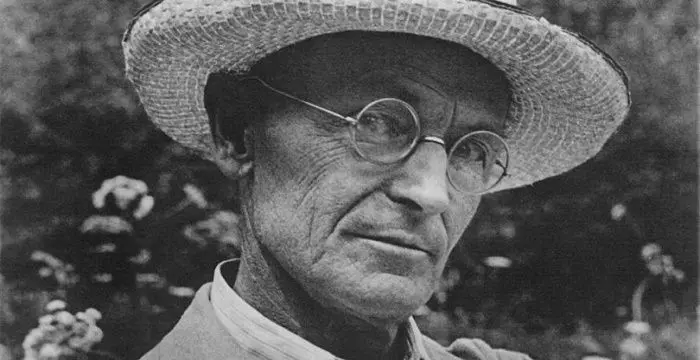
Hermann Hesse - Poets, Family and Life
Hermann Hesse's Personal Details
Hermann Hesse was a German novelist and poet, often hailed as one of the greatest German writers
| Information | Detail |
|---|---|
| Birthday | July 2, 1877 |
| Died on | August 9, 1962 |
| Nationality | German, Swiss |
| Famous | Nobel Laureates In Literature, Artists & Painters, Artists, Writers, Poets |
| Spouses | Maria Bernoulli, Ninon Auslander, Ruth Wenger |
| Siblings | Theo |
| Childrens | Bruno Hesse, Heiner Hesse, Martin Hesse |
| Discoveries / Inventions |
|
| Birth Place | Calw |
| Born Country | Germany |
| Gender | Male |
| Father | Johannes Hesse |
| Mother | Marie Gundert |
| Sun Sign | Cancer |
| Born in | Calw |
| Famous as | Poet |
| Died at Age | 85 |
// Famous Writers
Joyce Meyer
Joyce Meyer is a Christian author and speaker. This biography provides detailed information about her childhood, life, achievements, works & timeline
Temple Grandin
Temple Grandin is a well-known American writer, autistic activist and animal expert. This biography profiles her childhood, life, achievements, career and timeline
Tennessee Williams
Tennessee Williams was one of the greatest playwrights of the 20th century. This biography of Tennessee Williams provides detailed information about his childhood, life, achievements, works and timeline.
Hermann Hesse's photo
Who is Hermann Hesse?
Celebrated as one of the finest and most influential writers, Hermann Hesse belonged to the set of writers who were largely disillusioned by proceedings around them during the twentieth century. Most of his writings cited a longing for the bygone era of Romanticism and expressed his spiritual turmoil, deeply rooted in the pathos of the modern age as it was slowly losing its association with the inner self. But despite this, he provided his concept of an ideal world which can be seen as the remnant of the Romantic school of thought. Like Blake and Wordsworth, he concentrated on the three stages of development of human life, which begins with childhood innocence, moving on experience and later comes back to innocence. But this chronology may not be germane in the modern age, especially, the world left devastated and distraught after the two World Wars. He believed people born during or after the great wars are not likely to gain the ‘pre-WWI innocence’ and therefore are “confronted with the necessity to make free choices and judgments” in their second stage of life. Almost all of his novels dealt with this theme. As the world was still recovering from the wreckage of the Wars, his characters searched for the meaning of life which entailed the rejection of the conventional paths to peace.
// Famous Artists
Susan Mikula
Susan Mikula is an American artist and photographer. Check out this biography to know about her childhood, family life, achievements and fun factsabout her life.
Akira Toriyama
Akira Toriyama is a Japanese manga artist. This biography profiles his childhood, family, personal life, achievements, etc.
Bob Ross
Bob Ross was a celebrated, creative American painter and an art instructor. Check out this biography to know about his birthday, childhood, family life, achievements and fun facts about him.
Childhood & Early Life
Hermann Hesse was born in the town of Calw in W�rttemberg, Germany. Both of his parents served in India at a mission under the auspices of the Basel Mission, a Protestant Christian missionary society.
He attended the Latin School in Goppingen and entered the Evangelical Theological Seminary of Maulbronn Abbey in 1891.
In March 1892, he fled from the Seminary and in May the same year, he even attempted suicide and had to spend time with the theologian Christoph Friedrich Blumhardt. Later he was moved to a mental institution.
He attended the Gymnasium in Cannstatt, in 1892 and in 1893 he passed the One Year Examination, to complete his schooling.
After this, he began a bookshop apprenticeship in Esslingen am Neckar, but left after three days. In the beginning of summer in 1894, he began a 14-month mechanic apprenticeship at a clock tower factory in Calw.
In 1895, he began a new apprenticeship with a bookseller in T�bingen, which had a specialized collection in theology, philology, and law.
Career
In 1896, Hesse’s poem ‘Madonna’ was published in the Viennese periodical. In the autumn of the same year, his first small volume of poetry, ‘Romantic Songs’ was published.
In 1904, his breakthrough novel ‘Peter Camenzind’ was published which received rave reviews.
His second novel ‘Beneath the Wheel’ was published in 1906. ‘Gertrude’, another novel by him was published in 1910.
In 1912, he settled in Switzerland. But soon the First World War broke out and he became disillusioned with German nationalism
In 1917, he penned his novel ‘Demian’, which was published in 1919.
In 1920 he came up with the novella ‘Klingsor's Last Summer’ and in 1922 ‘Siddhartha’, one of his most venerated novellas was published.
In 1923, he gave up German and acquired Swiss citizenship. This was followed by a number of major works, such as, ‘Kurgast’ in 1925 and ‘The Nuremberg Trip’ in 1927.
In 1927, ‘Steppenwolf’, his widely acclaimed novel was published, and was followed by another ‘Narcissus and Goldmund’ in 1930.
He started to write what was going to be his last major work ‘The Glass Bead Game’ in 1931. His next novella ‘Journey to the East’ was released in 1932.
In 1943 ‘The Glass Bead Game’ was printed and he was awarded the Nobel Prize in Literature in 1946.
Major Works
His novel ‘Steppenwolf’ became an international success, which reflected the abysmal crisis in Hesse's spiritual world in the 1920s.
The novel ‘Siddhartha’ was about the spiritual journey of a man named Siddhartha. The book took Hesse’s fame to great heights and became an international hit. It was translated into many languages.
His last novel ‘The Glass Bead Game’, for which he won the Nobel Prize for Literature, is a fascinating tale of the complexity of modern life.
Awards & Achievements
In 1946, he received Nobel Prize in Literature after he published his last major novel ‘The Glass Bead Game’.
Personal Life & Legacy
He got married to Maria Bernoulli in 1904 and the couple had three sons.
In 1924, he married singer Ruth Wenger, but their married life was quite unstable and they soon got separated.
He married historian Ninon Dolbin, n�e Ausl�nder in 1927.
He breathed his last breath on 9 August 1962 and was incinerated at San Abbondio in Montagnola.
Trivia
As a child this great writer had serious issues with any sort of authority, be it his parents or teachers, for which he had to be placed in special schools and later at a mental institution.
He was discharged from military service due to an eye condition and all his life he was afflicted with nervous disorders.
Though he grew up to became of one the greatest writers of his age, but as a teenager he wanted to become an artist drawing inspiration from his half-brother, who was also his first role model.
// Famous Poets
Charles Bukowski
Charles Bukowski was a German-born American novelist, short story writer and poet. With this biography, learn in details about his childhood, life, works, career and timeline
Seamus Heaney
Nobel Laureate Seamus Heaney was an Irish poet, playwright and translator. Know about his profile, childhood, life and timeline in the biography below.
Walt Whitman
Walt Whitman was an American poet, journalist and humanist. Read this brief biography to find more on his life & timeline.
Hermann Hesse's awards
| Year | Name | Award |
|---|---|---|
Other | ||
| 0 | 1946 – Goethe Prize | |
| 0 | 1946 – Nobel Prize in Literature | |
| 0 | 1947 – Honorary Doctorate from the University of Bern | |
| 0 | 1950 – Wilhelm-Raabe-Preis | |
| 0 | 1954 – Pour le Mérite | |
| 0 | 1955 – Peace Prize of the German Book Trade | |
| 0 | 1906 – Bauernfeld-Preis | |
| 0 | 1928 – Mejstrik-Preis of the Schiller Foundation in Vienna | |
| 0 | 1936 – Gottfried-Keller-Preis | |
Hermann Hesse biography timelines
- // 2nd Jul 1877Hermann Hesse was born in the town of Calw in W�rttemberg, Germany. Both of his parents served in India at a mission under the auspices of the Basel Mission, a Protestant Christian missionary society.
- // 1891He attended the Latin School in Goppingen and entered the Evangelical Theological Seminary of Maulbronn Abbey in 1891.
- // Mar 1892In March 1892, he fled from the Seminary and in May the same year, he even attempted suicide and had to spend time with the theologian Christoph Friedrich Blumhardt. Later he was moved to a mental institution.
- // 1893He attended the Gymnasium in Cannstatt, in 1892 and in 1893 he passed the One Year Examination, to complete his schooling.
- // 1894After this, he began a bookshop apprenticeship in Esslingen am Neckar, but left after three days. In the beginning of summer in 1894, he began a 14-month mechanic apprenticeship at a clock tower factory in Calw.
- // 1895In 1895, he began a new apprenticeship with a bookseller in T�bingen, which had a specialized collection in theology, philology, and law.
- // 1896In 1896, Hesse’s poem ‘Madonna’ was published in the Viennese periodical. In the autumn of the same year, his first small volume of poetry, ‘Romantic Songs’ was published.
- // 1904In 1904, his breakthrough novel ‘Peter Camenzind’ was published which received rave reviews.
- // 1904He got married to Maria Bernoulli in 1904 and the couple had three sons.
- // 1906 To 1910His second novel ‘Beneath the Wheel’ was published in 1906. ‘Gertrude’, another novel by him was published in 1910.
- // 1912In 1912, he settled in Switzerland. But soon the First World War broke out and he became disillusioned with German nationalism
- // 1917In 1917, he penned his novel ‘Demian’, which was published in 1919.
- // 1920In 1920 he came up with the novella ‘Klingsor's Last Summer’ and in 1922 ‘Siddhartha’, one of his most venerated novellas was published.
- // 1923In 1923, he gave up German and acquired Swiss citizenship. This was followed by a number of major works, such as, ‘Kurgast’ in 1925 and ‘The Nuremberg Trip’ in 1927.
- // 1927In 1927, ‘Steppenwolf’, his widely acclaimed novel was published, and was followed by another ‘Narcissus and Goldmund’ in 1930.
- // 1927He married historian Ninon Dolbin, n�e Ausl�nder in 1927.
- // 1931He started to write what was going to be his last major work ‘The Glass Bead Game’ in 1931. His next novella ‘Journey to the East’ was released in 1932.
- // 1943In 1943 ‘The Glass Bead Game’ was printed and he was awarded the Nobel Prize in Literature in 1946.
- // 1946In 1946, he received Nobel Prize in Literature after he published his last major novel ‘The Glass Bead Game’.
- // 1962He breathed his last breath on 9 August 1962 and was incinerated at San Abbondio in Montagnola.
// Famous Nobel Laureates In Literature
Seamus Heaney
Nobel Laureate Seamus Heaney was an Irish poet, playwright and translator. Know about his profile, childhood, life and timeline in the biography below.
Jean-Paul Sartre
Jean-Paul Sartre was a great existentialist philosopher of the 20th century. Check out this biography to know about his childhood, family life, achievements and other facts related to his life.
Pablo Neruda
Pablo Neruda was a Chilean poet, politician and Nobel laureate. Go through this biography to learn more about his profile, childhood, life and timeline.
John Steinbeck
John Steinbeck was a celebrated American writer famous for his novel, ‘The Grapes of Wrath’. Read on for detailed information about his childhood, profile, career and timeline
Samuel Beckett
Samuel Beckett was an Irish playwright, novelist, theatre director and poet. This biography profiles his childhood, life, works, achievements and timeline
Boris Pasternak
Boris Leonidovich Pasternak was a Russian novelist, poet and translator. This biography of Boris Pasternak provides detailed information about his childhood, life, writing career, achievements and timeline.
Hermann Hesse's FAQ
What is Hermann Hesse birthday?
Hermann Hesse was born at 1877-07-02
When was Hermann Hesse died?
Hermann Hesse was died at 1962-08-09
Where was Hermann Hesse died?
Hermann Hesse was died in Montagnola
Which age was Hermann Hesse died?
Hermann Hesse was died at age 85
Where is Hermann Hesse's birth place?
Hermann Hesse was born in Calw
What is Hermann Hesse nationalities?
Hermann Hesse's nationalities is German, Swiss
Who is Hermann Hesse spouses?
Hermann Hesse's spouses is Maria Bernoulli, Ninon Auslander, Ruth Wenger
Who is Hermann Hesse siblings?
Hermann Hesse's siblings is Theo
Who is Hermann Hesse childrens?
Hermann Hesse's childrens is Bruno Hesse, Heiner Hesse, Martin Hesse
What is Hermann Hesse's inventions/discoveries?
Theosophy was invented (or discovered) by Hermann Hesse
Who is Hermann Hesse's father?
Hermann Hesse's father is Johannes Hesse
Who is Hermann Hesse's mother?
Hermann Hesse's mother is Marie Gundert
What is Hermann Hesse's sun sign?
Hermann Hesse is Cancer
How famous is Hermann Hesse?
Hermann Hesse is famouse as Poet



